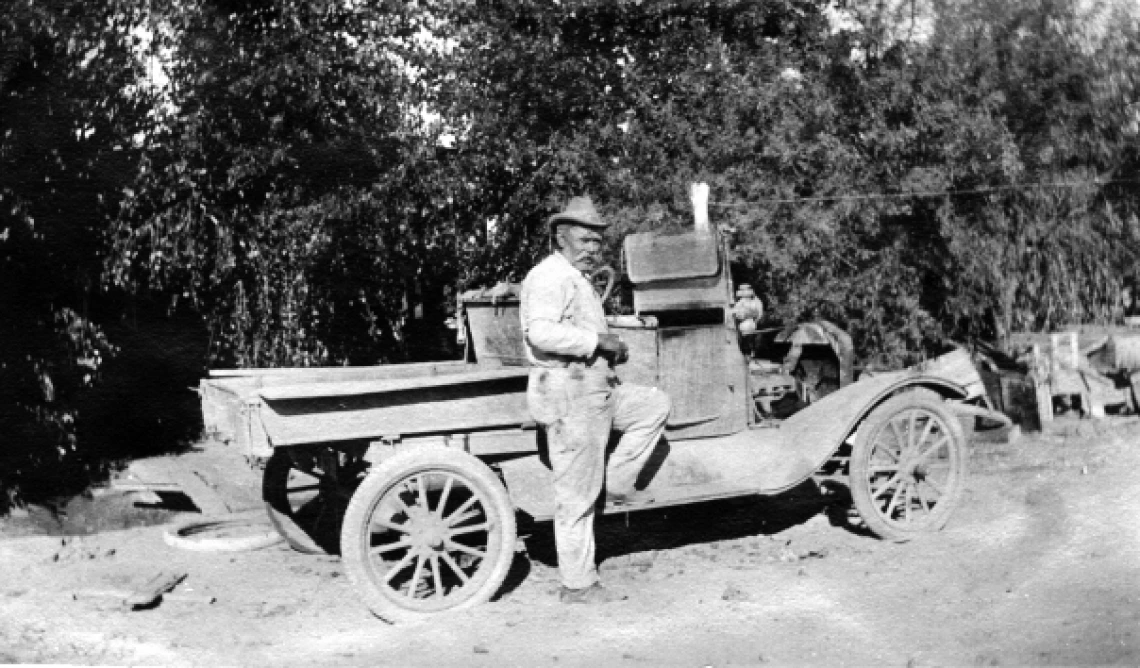Scrapbook of Verda Lee Ludy Parrick

Photograph of Jacob E. Ludy and his old Ford he called Bertha, circa 1900-1920.
Collection area: Arizona and Southwest
Collection dates: 1900-1920
Scrapbook of photographs and biographical material concerning Jacob E. Ludy and his family in Yuma, Ariz., in the early 1900s.
Jacob E. Ludy was a civil engineer who helped build the Yuma canals in the early 1900's. He is regarded as an Arizona Pioneer in the Yuma Valley.
Mr. Ludy was born in Mercer County, Missouri, in 1858. He was six years old when his family moved to the Sacrament valley near Butte City California. He attended Pierce Christian College for four years and afterwards moved to the Washington State where he worked in engineering and railroad construction. He was named County Surveyor of Lincoln County, Washington and afterward City Surveyor of Davenport and Sprague, Washington.
In 1898 Mr. Ludy relocated to Yuma, Arizona where he began surveying for the Irrigation, Land and Improvement Company, he later became the general manager and vice president of the company. The Irrigation, Land and Improvement Company built sixty miles of canals which irrigated fifty thousand acres of land in Yuma County.
Ludy was employed by the Irrigation, Land and Improvement Company until 1908 when it was absorbed by the United States Government. In 1910 He moved to Imperial Valley, California where he worked on another important irrigation project in the California desert. Mr. Ludy returned to Yuma to supervise a Colorado River protection project for two years. In 1913 he moved his family to Palo Verde Valley, California where became the chief engineer for the California Farms and Irrigation Company. His last job was working for the government as an engineer on the Colorado River. Mr. Jacob E. Ludy died in 1921.
A collection guide explains what's in a collection. New to using our collections? Learn how to use a collection guide.
Collection guideAccess this collection
Visit us in person to access materials from this collection. Our materials are one-of-a-kind and require special care, so they can’t be checked out or taken home.
How to cite
Learn how to cite and use materials from Special Collections in your research.
